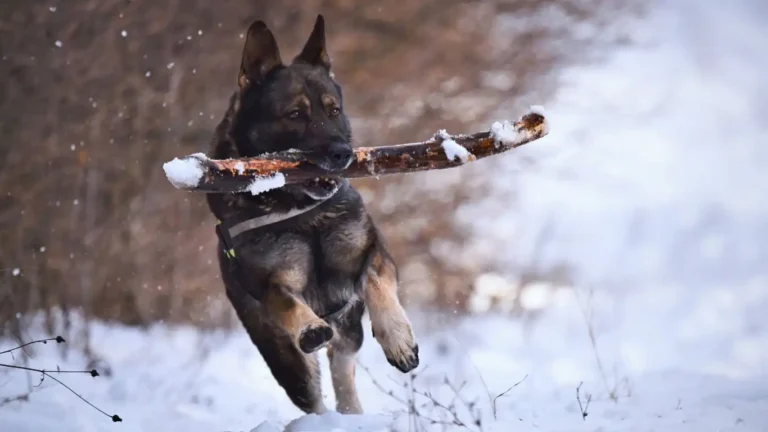Why Your Dog Dragging Back Legs Could Signal a Serious Issue
Welcome! If you’ve ever noticed your dog dragging their back legs and wondered why, you’re in good company—it’s alarming and understandably worrisome. To shed light on this issue, I sat down with Dr. Jane Smith, DVM, a board‑certified veterinary neurologist, to answer the most common questions pet parents ask.
Q&A with Dr. Jane Smith, DVM
1. What are the most common reasons dogs drag their back legs?
Dr. Smith: “There are several key causes:
- Intervertebral Disc Disease (IVDD): small breeds with long backs (like Dachshunds) often have herniated discs causing nerve compression, pain, and hind‑leg dragging.
- Degenerative Myelopathy: a progressive spinal cord disease in older dogs—especially large breeds—that leads to gradual hind‑leg weakness and paralysis.
- Hip and Joint Issues: arthritis, hip dysplasia, cruciate tears, or patellar luxation can compromise mobility.
- Spinal Stenosis or Cauda Equina Syndrome: lower spine compression affects nerves to the hind legs.
- Neurological Events: things like fibrocartilaginous embolism (spinal stroke), tumors, trauma, or tick paralysis.
Time matters—some conditions, like IVDD or spinal strokes, require urgent care.”
2. How does a vet diagnose the cause?
Dr. Smith: “We start with a detailed physical and neurological exam—checking reflexes, pain response, sensation, and gait. Then we may order:
- Imaging: X‑rays, MRI, or CT, depending on suspected spinal issues.
- Blood work and tick‑disease panels to rule out systemic or infectious causes.
- Electrodiagnostics to assess nerve and muscle health.”
3. Can my dog recover?
Dr. Smith: “It depends on the cause:
- IVDD: may recover fully with surgery or rigorous crate rest and meds.
- Degenerative Myelopathy: not curable, but aggressive physical therapy, laser/acupuncture, hydrotherapy, and even mobility carts can maintain quality of life for years.
- Spinal strokes (FCE): often some recovery possible with rehab.
- Arthritis/hip issues: pain management, weight control, supplements, and therapy often help.
Early diagnosis and tailored treatment are critical.”
4. What home care helps?
Dr. Smith: “Even outside the clinic you can help a lot:
- Passive range‑of‑motion stretches—10–15 reps, several times daily, help prevent stiffness and swelling.
- Massage and gentle bicycle‑style limb movements improve circulation.
- Hydrotherapy or underwater treadmill provides low‑impact muscle support and mobility.
- Assistive devices: slings or carts reduce drag and prevent skin damage.” :contentReference[oaicite:1]{index=1}
5. When is it an emergency?
Dr. Smith: “If your dog suddenly collapses and can’t use their hind legs, displays pain, incontinence, pale gums, rapid breathing, or shock symptoms—seek veterinary attention immediately. Sudden paralysis is often an emergency.” :contentReference[oaicite:2]{index=2}
6. Can arthritis alone cause dragging?
Dr. Smith: “Absolutely. Osteoarthritis in the hips, knees, and spine can cause stiffness, pain, and muscle atrophy—leading to a bunny‑hop gait or dragging back feet.” :contentReference[oaicite:3]{index=3}
7. What breeds are at higher risk?
Dr. Smith: “IVDD is common in Dachshunds, Beagles, French Bulldogs. Degenerative myelopathy is seen in German Shepherds, Corgis, Boxers. Spinal stenosis crops up in active large breeds. Hip dysplasia in Labradors, Golden Retrievers, and other giants. However, any dog can be affected.” :contentReference[oaicite:4]{index=4}
8. Are there preventive steps?
Dr. Smith: “Maintenance goes a long way:
- Keep weight healthy to reduce joint/spine strain.
- Use gentle, low‑impact exercise—swimming is ideal.
- Avoid activities that stress the spine—like jumping from heights in susceptible breeds.
- Provide joint supplements (glucosamine, omega‑3s) and follow vet‑recommended screenings for high‑risk breeds.”
9. How is degenerative myelopathy managed?
Dr. Smith: “While there’s no cure, supportive care helps maintain function:
- Consistent physiotherapy, stretches, and hydrotherapy.
- Laser/acupuncture may slow progression or ease symptoms.
- Mobility braces or carts support daily life.
- Owner education on bladder care, skin monitoring, and in‑home exercises are essential.” :contentReference[oaicite:5]{index=5}
10. Could it be tick paralysis or infection?
Dr. Smith: “Yes—tick paralysis often causes ascending paralysis that may begin hind legs first. Lyme disease and other infections affect joints and nerves. If there’s possible tick exposure or infection, vets will run specific blood tests and treat accordingly.” :contentReference[oaicite:6]{index=6}
Additional FAQs
What’s the difference between dragging and knuckling?
Dragging means the foot or legs don’t lift properly. Knuckling means the paw folds over due to lost proprioception. Both suggest neurological impairment.
Is massage really helpful?
Yes. Regular massage improves circulation, reduces stiffness, and boosts proprioception. Simple passive limb movements 3–4 times daily are recommended.” :contentReference[oaicite:7]{index=7}
My dog urinates inside—is it connected?
Unfortunately, yes. Spinal or neurological injury can impair bladder/bowel function, leading to incontinence. This requires prompt care to prevent infections and prevent sores.”
When is surgery needed?
Conditions like herniated discs, cauda equina syndrome, spinal stenosis, or tumors often require surgical intervention to relieve nerve compression and preserve function.
Rehab or cart—which is best?
Both, depending on the dog’s needs. Rehabilitation helps preserve muscle, while carts enable mobility when hind limbs can’t support weight reliably.
Where can I learn more?
Great starting points: merckvetmanual.com, akc.org, thesprucepets.com.
Final Thoughts
Watching your dog struggle to walk is heartbreaking—but knowing that dragging is a symptom, not a diagnosis, empowers you to take action. Early evaluation by a trusted veterinarian, tailored diagnostics, and a proactive treatment plan—whether surgical, rehabilitative, or supportive—can often improve outcomes significantly.
Dr. Smith always reminds owners: “Trust your instincts. If something seems off, it probably is. Every moment counts.” Real commitment, partnered with veterinary expertise, can make a profound difference in your pet’s life.
If your dog is showing any signs of hind‑leg weakness, drag, or sudden changes in mobility, please contact your veterinarian right away. And if you’d like help navigating care or support options, feel free to reach out to me—I’m here to help.
Wishing you and your four‑legged friend strength and comfort on this journey.
— Dr. Jane Smith, DVM






